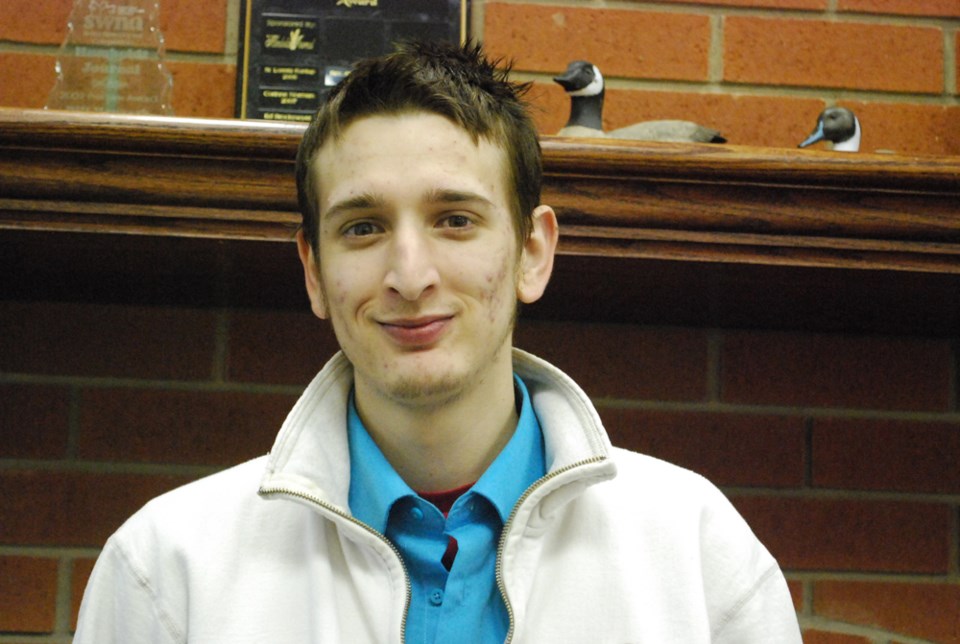Hockey players need to stop turning their back on the play. All too often I watch hockey games where the puck goes along the boards and the player with the puck turns his back on the play to avoid being hit.
Players, coaches and parents all know that checking from behind is both illegal, in the sense that it is a penalty and dangerous.
The Hockey Canada rulebook clarification for checking from behind states:
“Checking from Behind entails that contact with the player being checked takes place in the back part of the body.”
To take things even further the next part of the clarification list stipulates:
“Where a player about to be checked turns and, as a result, creates contact with the back, a penalty shall be assessed to the player delivering the check for Checking from Behind.”
This clarification encourages players to put themselves in a vulnerable and dangerous position because the result is a penalty for the incoming player.
As a former referee, I spent countless hours watching players try to take advantage of that rule by turning their back on the play and hoping that the incoming player, who in some cases has already committed to making a bodycheck will stop and not make contact with him at all.
This is very dangerous for both the puck carrier and the incoming player.
For players with the puck the dangers are obvious. Serious injury can occur resulting in possible paralysis and in extreme cases even death.
For the player without the puck, it’s dangerous because the consequences for hitting a player that puts himself in that dangerous position can be catastrophic.
Imagine being a kid in his early or mid-teens who caused a fellow competitor serious injury. These kids have to live with that for the rest of their lives.
Now imagine being the parent of either player.
For the parent of the injured player, imagine your child was playing hockey and he turned his back on the play to try and stop the other team member from hitting him, which resulted in serious injury or death.
Not being a parent myself it is hard for me to fully understand how important a child is to a parent but I’m sure most parents would be devastated by such an occurrence.
In addition, these parents will receive a major financial burden that, depending on the extent of the injury may never go away.
It’s important for everyone involved to remember that the risks for all parties far outweigh the benefits.
This isn’t a problem unique to minor hockey either. It starts at the top where NHL players consistently do the same thing. To make matters worse though, those players are supposed to be role models for all the younger players. If the pros are turning their backs on the play why shouldn’t kids do it?
It starts at the top.
The NHL has to curb this ideology and start showing younger kids that turning your back on the play isn’t an acceptable way to avoid contact.
Hockey Canada also needs to look at the checking from behind rule and determine a way to curb that rule.
It will only help the safety and well being of all players.
While I don’t agree with turning your back on the play, I do agree with players being mandated to wear stop signs on their backs. If you can see the stop sign, players need to stop.
Having said that, you can’t honestly expect a hockey player who is committed to making a body check stop in a split second because the player getting hit suddenly turned around.
I have also seen plenty of circumstance where the stop sign is visible the whole time and a player finishes his check from behind anyway.
Those plays need to be gone from the game.
I’m not saying all players do it and I’m not saying that all head and neck injuries are a direct result of players turning around right before they get checked.
The burden should be on the players that turn their backs to avoid putting themselves in that vulnerable position. If a player wants to turn his back it should be on him and not the player making the check.
Figuring out whether it will be a penalty or not would be quite simple.
Like any other penalty in hockey it should be at the discretion of the referee to decide whether the player turned their back on the play and how much time the opposing player had to stop.
Like I said, checking from behind has no place in hockey but neither does turning your back on the play.
Given all the talk the last few years about player safety, and concussions specifically, shouldn’t we all be doing everything we can to keep players’ heads and necks safe?




